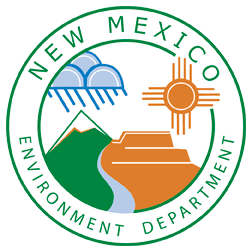- I am discharging wastewater and it may get into groundwater. Do I need a groundwater Discharge Permit?
- It depends. Any domestic wastewater discharges to a septic system less than 5,000 gallons per day are regulated by the NMED liquid waste program. Domestic wastewater discharges greater than 5,000 gallons per day, from large capacity septic tanks, wastewater treatment plants, sludge and septage disposal, and reclaimed domestic wastewater will require a discharge permit. Other examples of facilities that will likely require a discharge permit include industrial discharges (i.e. power plants, asphalt processing, car washes, and chlorinated solvent remediation) agricultural wastewater discharges (i.e. dairies, chile processing, cheese manufacturing, slaughterhouses, and food processing).
- What is an NOI?
- A notice of intent (NOI) is a form submitted to NMED to assess if a groundwater Discharge Permit is needed for a specific activity. If you are unsure if you need to submit a NOI, please contact NMED for guidance. A copy of the form may be found at www.env.nm.gov/forms/ under the Ground Water Quality Bureau Section
- What is domestic wastewater?
- Water from toilets, sinks, dishwashers and laundries. Generally, domestic wastewater originates from homes and businesses.
- If I am discharging to a lined lagoon or holding tank, do I still need a Discharge Permit?
- Yes, under most circumstances.
- Do I need a Professional Engineer (PE) to design my wastewater treatment system?
- Yes, you need to hire a PE to design a new system or modification to an existing system. NMED maintains a list of consultant, which can be provide upon request This list is not all inclusive and does not constitute endorsement of these firms by NMED.
- How do I determine the depth to groundwater at my discharge site?
- How do I determine the Total Dissolved Solids (TDS) value of the groundwater most likely to be affected by my discharge?
- Sample a nearby well and have it analyzed at a laboratory or look for a hydrogeologic study for the area near your discharge. NMED maintains a list of laboratories, which can be provided upon request. This list is not all inclusive and does not constitute endorsement of these firms by NMED.
- How do I get a permit?
- Prior to filling out an application, GWQB recommends contacting us to discuss your permitting situation first. Otherwise, fill out an application at www.env.nm.gov/forms/ under the Ground Water Quality Bureau Section and follow the process. Please note that there are two discharge permit applications, one for non-dairy operations and one for dairy only operations. Please select the appropriate application that applies to you.

Phone Numbers / Social Media
